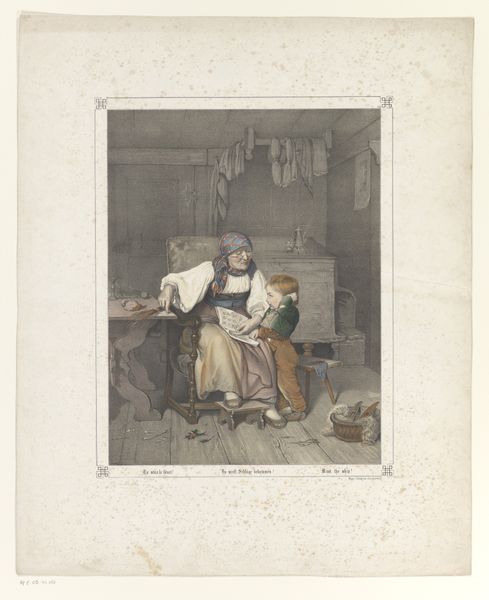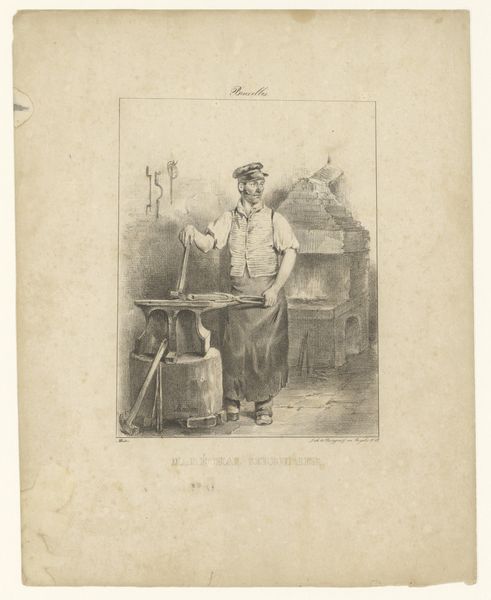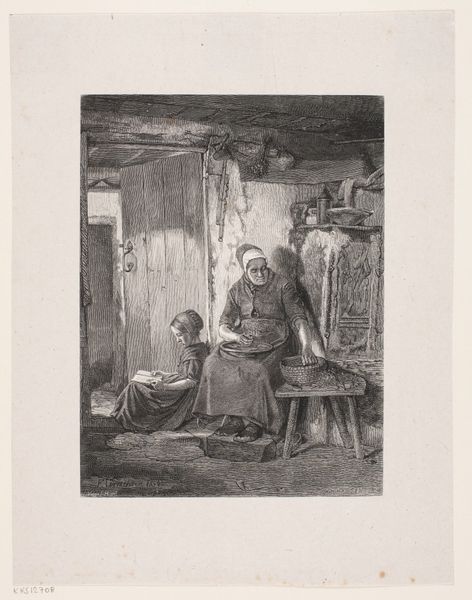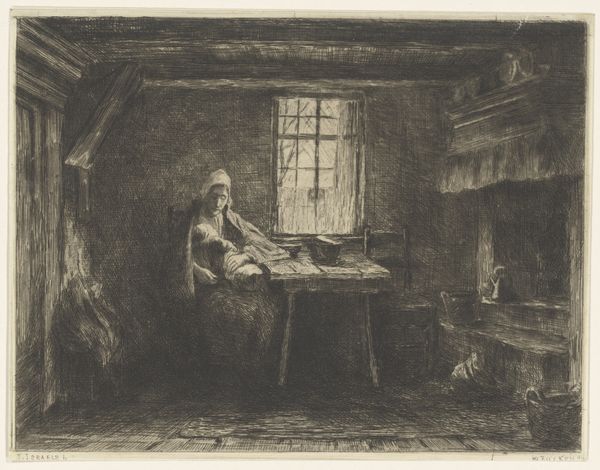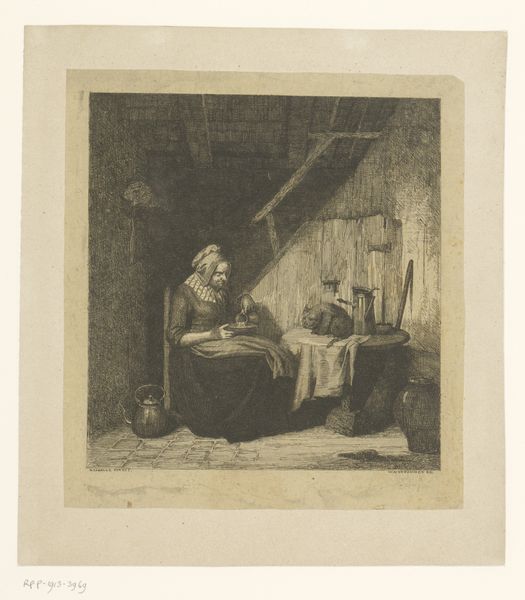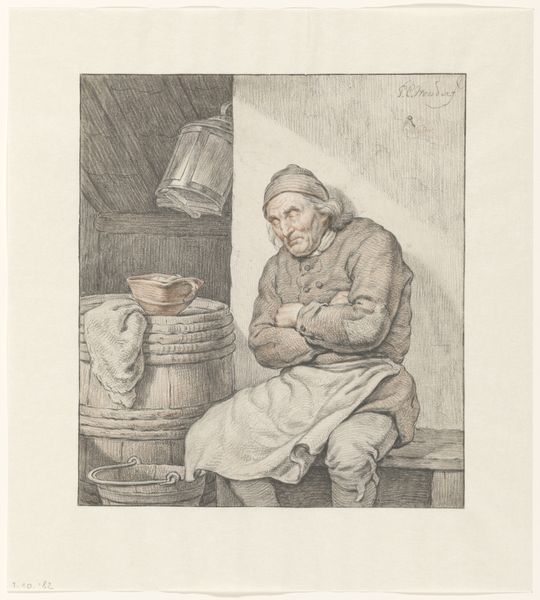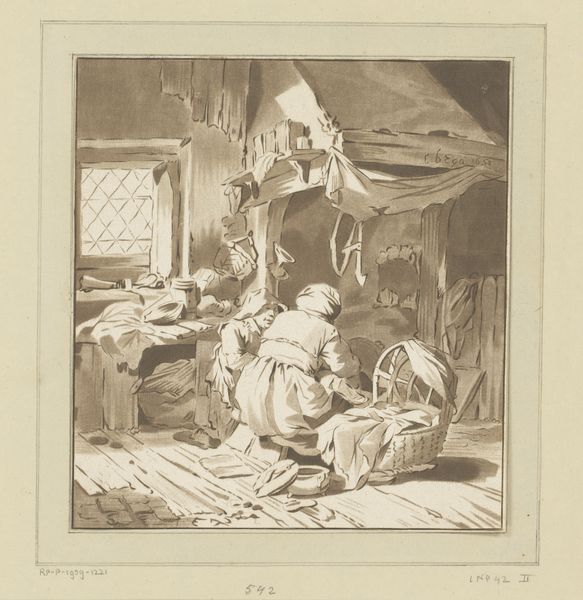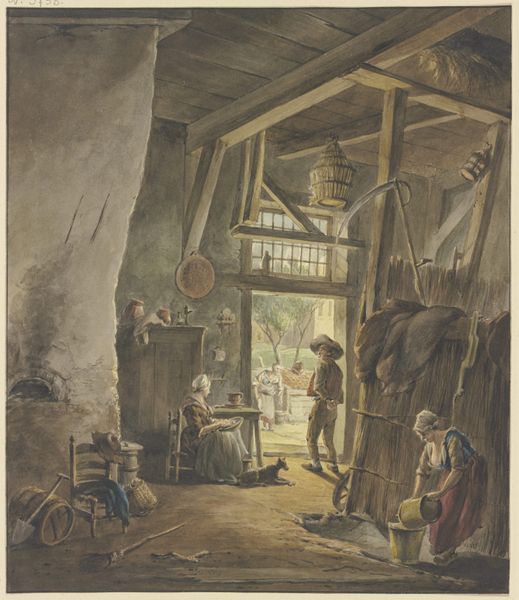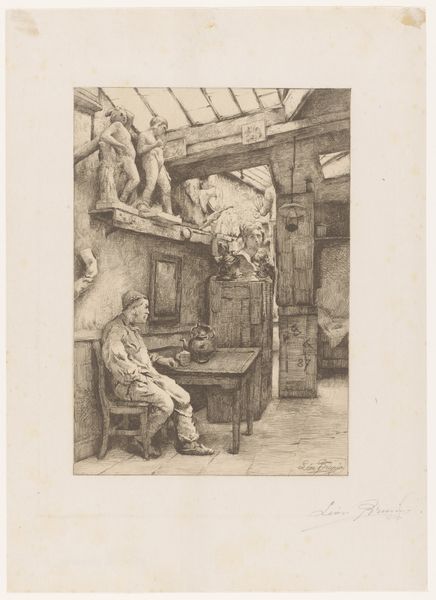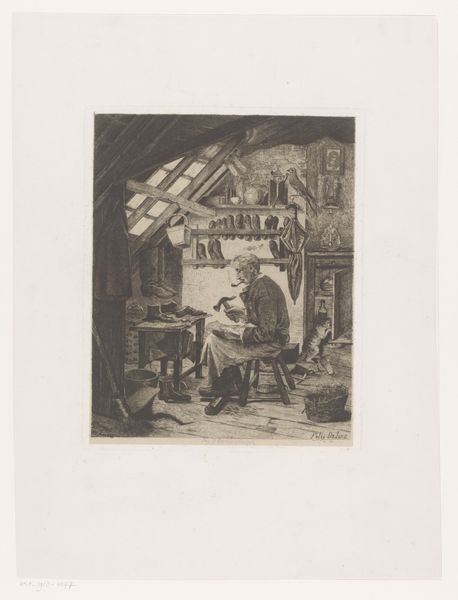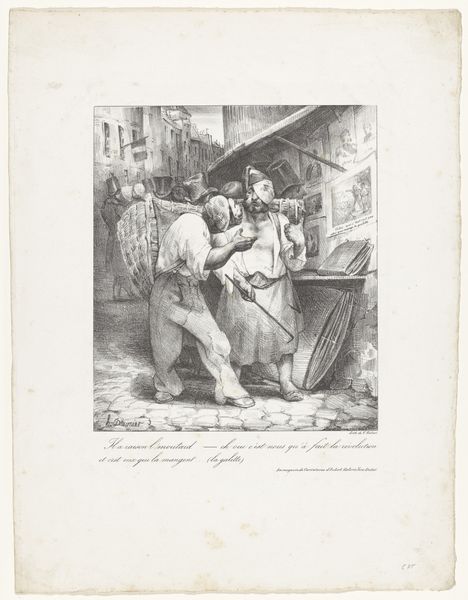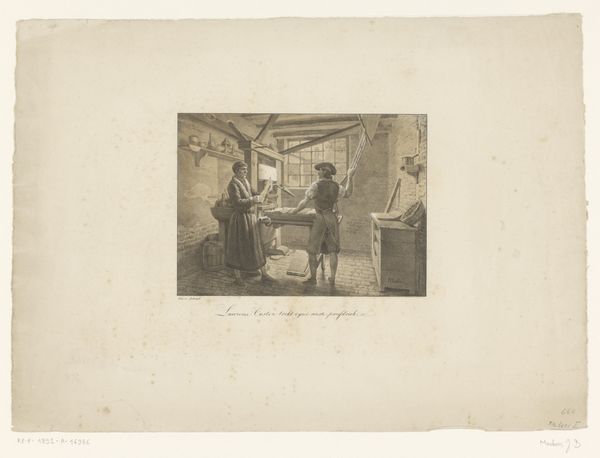
Dimensions: height 218 mm, width 173 mm
Copyright: Rijks Museum: Open Domain
Curator: Here we have "Timmerman zittend op een schaafbank in zijn werkplaats," or "Carpenter Sitting at a Workbench in his Workshop," created in 1861 by Jacob Taanman. What's your immediate impression? Editor: The workshop's cramped space and muted colours give it a rather melancholic, introverted feeling. Curator: Right. And that aesthetic relates to its historical context. This drawing belongs to a period deeply engaged with representing the everyday realities of labor, yet romanticizing them too. Think about how industrialization was changing the social fabric of labor. Consider the narrative being told here about craft. Editor: Yes, a nostalgia perhaps? Notice how the light falls—not on modern machinery but on hand tools carefully arranged on the shelves. Tools of an older trade. Curator: Absolutely, and let's look at those symbols closely. He’s sitting, seemingly idle—mending, perhaps—rather than actively building. What might that stillness convey about the shifting role of labor? Editor: It draws attention to the person *behind* the craft, elevating the human element. Wood, the essential raw material, has such rich symbolism – life, growth, the tree of knowledge…The man in this drawing appears timeless. The visual vocabulary points to a rootedness. Curator: True. The imagery evokes an age before mass production, subtly critiquing the alienation of industrial labor. It creates space for reflections on gender and class hierarchies too; the tools imply coded skill and labour which have also gendered and class-based assumptions that went into making art about making something useful for human. Editor: You are so right, so we can read these kind of pictures beyond face-value readings! In these historical images of labour, seeing not only the surface reality, but something so entrenched culturally feels invaluable. Curator: Yes, and situates our understanding of it within that much larger framework, even for contemporary issues related to work, economy and gender equity. Well, thank you, as always. Editor: Of course, likewise! Always illuminating.
Comments
No comments
Be the first to comment and join the conversation on the ultimate creative platform.
